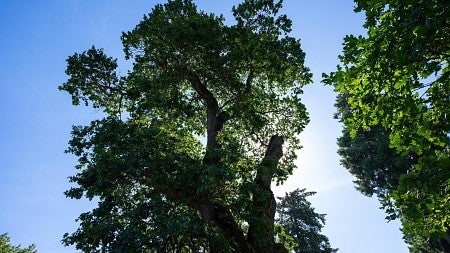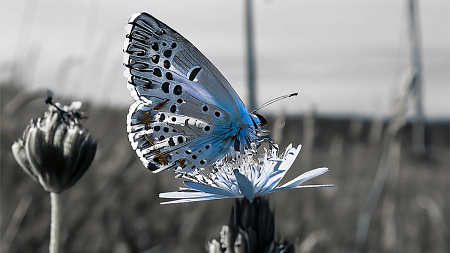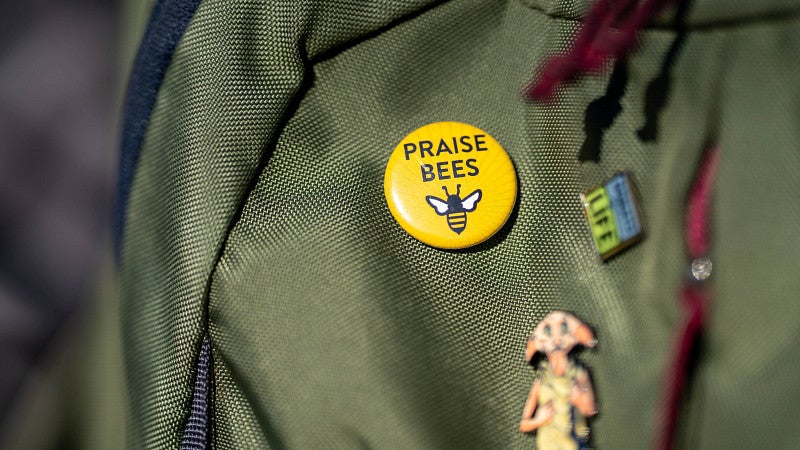
Queen of the Bees
Biologist Lauren Ponisio has a plan to help the pivotal pollinators in the Pacific Northwest
By Tim Christie • Photos by Nicolas Walcott • April 6, 2022
7 min readOn a brilliant, balmy, late winter’s afternoon, entomologist Lauren Ponisio walks along a ridge above the McKenzie River, through a landscape transformed by fire from a forest of Douglas fir into a blackened moonscape.
She stops to inspect the remnants of a slash pile strewn with blackened stumps and snags. White flags mark the spots where she and her students had sown native plant seeds the previous fall. Amid the rubble, she spots a few green leaves poking through the ashy soil.
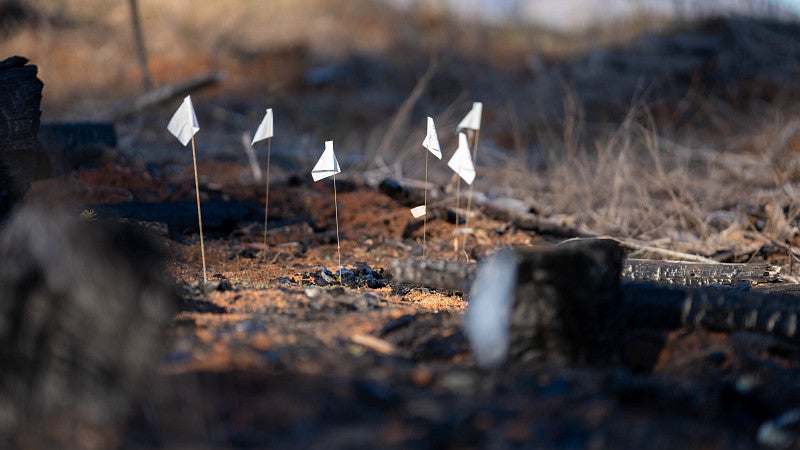
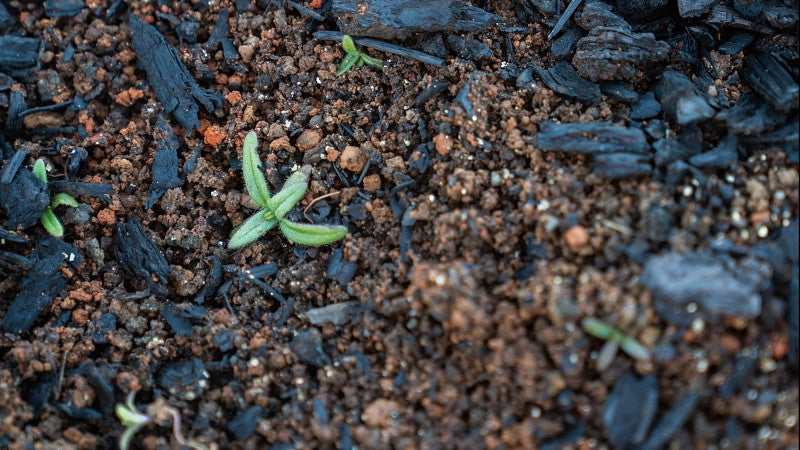
The plot doesn’t look like much right now. But Ponisio, an assistant biology professor at the University of Oregon, has high hopes that this pilot study could change how forestlands in the Northwest are managed, particularly post-harvest and post-fire, to the benefit of the humble, and troubled, wild bee.
“Look at them!” she says of the tiny emerging plants. “This will be full of bees. It’s going to be great.”
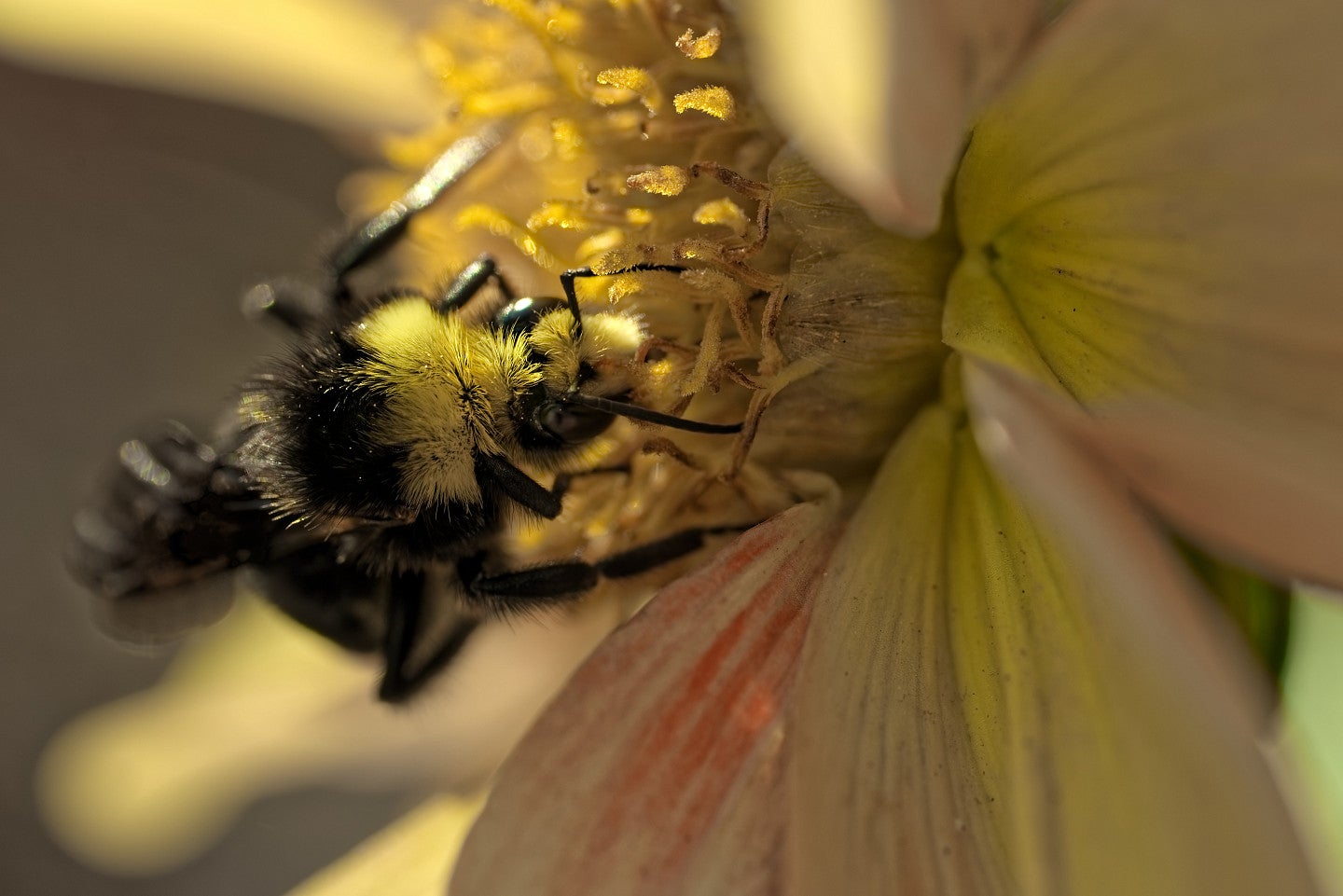
The idea is that reintroducing native plant species into what was a monoculture of fir trees will attract pollinators, such as Bombus occidentalis, a.k.a. the western bumblebee, which was once abundant across the West but whose numbers have crashed over the last quarter-century.
These patches of native plants could help native bee populations recover and keep them from being listed as threatened or endangered species, Ponisio says, thus “avoiding another spotted owl situation” that could trigger new restrictions on logging in Northwest forests.
Research bee-ginnings
Ponisio joined the College of Arts and Sciences’ Department of Biology in 2020 and is also part of the Institute of Ecology and Evolution. She studies bees and their roles as pollinators, both in managed and natural-plant communities.
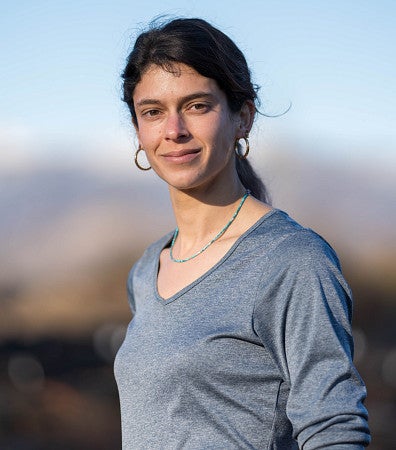
Her research has examined ways to persuade California almond growers to adopt more bee-friendly agricultural practices; discovered how native bee species may be best equipped to survive intensive agricultural practices and climate change; and analyzed how forest fires can help maintain pollinator biodiversity.
Growing up in California’s fertile San Joaquin Valley, Ponisio lived in a community that was immersed in agriculture and the buzzing creatures that make it possible.
“The thing about growing up in Fresno is, you’re just integrated into agriculture,” she says. “You can’t escape it.”
Bees, Ponisio adds, were central to everything.
“I grew up with this core understanding that bees are incredibly important for agricultural systems,” she says. “Even the newspaper was called the Fresno Bee.”
In high school, Ponisio loved environmental science and biology, but she knew of few biology-based career paths.
“I was thinking, ‘I love biology, so I’ll be a doctor,’” Ponisio says. “It took me a while to realize, ‘Oh, you can have a career, you can conduct research and you can just study ecology and that’s a job.’”
Butterflies and a transformation
As an undergraduate at Stanford University, Ponisio was taking premed classes but the courses that excited her were environment- and ecology-focused. During her freshman year, she heard about an opportunity to work on a summer research project with biology professor Carol Boggs, who was conducting a long-term study of high-elevation butterflies at a research station in the Colorado Rockies.
“I just thought, ‘I’ll try this out and see what it’s like,’” Ponisio says.
They would catch butterflies, gently write numbers on their wings, release them, and track them through the summer, which allowed the scientists to approximate the insects’ population size.
After that experience, Ponisio knew her path had changed. Boggs, she says, “was really instrumental in my career.”
“I had zero research experience, I had no knowledge of anything related to butterfly populations, and she gave me a shot,” Ponisio says. “Without that shot, I would not be a professor today. I remember that fact whenever undergraduate students express interest in working with me. I want to provide opportunities for them to experience research and fieldwork.”
Boggs, now at the University of South Carolina, says fieldwork can often be transformative for students.
“It broadens their horizons of understanding landscapes and understanding ecologies,” she says. “They get immersed in a field situation where they have to pay attention to various aspects of the natural world around them.”
Boggs called Ponisio “one of the best undergrads I ever worked with, in terms of her smarts and stick-to-it-iveness, self-motivation, organization. It was very clear to me if she wanted to go into academia, there would be no problem whatsoever.”
When Ponisio got back to campus, she says, she stopped taking premed classes and started taking lots of ecology courses.
“I secretly changed my major,” she says. “I didn’t tell my family. They really wanted me to be a doctor.”
Bees on the brink
Ponisio gravitated to the study of bees because of their role as pollinators. “I wanted to focus my research on how to make agriculture better for wildlife and for people,” she says.
More than 20,000 bee species exist in the world, including at least 630 distinct species in Oregon, according to the Oregon Bee Atlas.
Bees play a critical role in pollinating a wide variety of plants, trees, and flowers, including about 85 percent of cultivated crops worldwide.
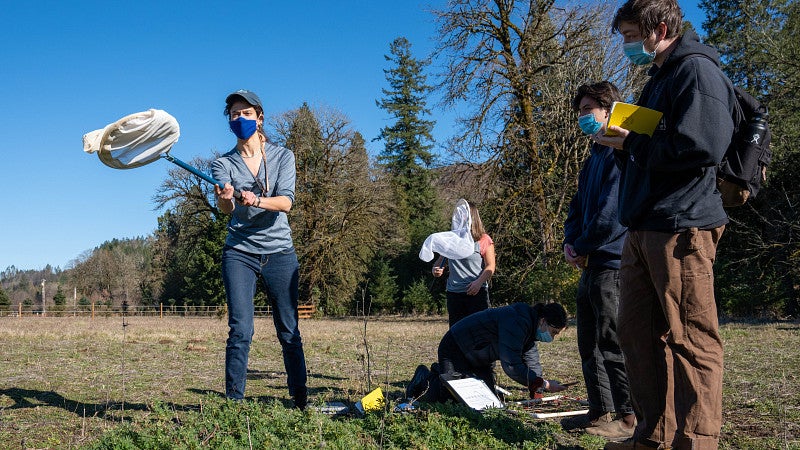
But bees are in trouble, with habitat degradation, viruses, pesticides, and climate change among the culprits.
Beekeepers in the United States lost 45 percent of managed honey bee colonies from April 2020 to April 2021, according to the nonprofit Bee Informed Partnership, which uses science-based approaches to improve the health and long-term sustainability of honey bees and other plant pollinators.
Native bees are suffering as well. Of the more than 4,000 native bee species in North America, more than half are in decline and one in four is imperiled and at increasing risk for extinction, according to a 2017 survey conducted by the Center for Biological Diversity, a nonprofit organization that protects endangered species through legal action, scientific petitions, creative media, and grassroots activism.
Just last year, Franklin’s bumblebee, found only in southern Oregon and northern California, was listed as endangered by the US Fish and Wildlife Service. Three other species are on the verge of being listed, Ponisio says.
Meadows abuzz with life
That’s why Ponisio hopes her pollinator project up the McKenzie River Valley can make a difference.
After the Holiday Farm Fire burned more than 170,000 acres along the river corridor east of Eugene in 2020, Ponisio wondered whether landowners could be persuaded to leave room for wildlife habitat, instead of just replanting Douglas fir, especially in areas where the soil is thin or the slopes are steep.
She connected with Jim Russell, BS ’85 (management), and Jane Haake, BS ’84 (finance), a married couple who own Whitewater Ranch, a 1,700-acre spread along the river east of Leaburg that dates to the 1890s.
The fire tore through the ranch, sparing the couple’s home and 86 acres of organic blueberries, but burning an outbuilding, a 100-year-old dairy barn, nine antique farm vehicles, and 1,000 acres of Douglas fir.
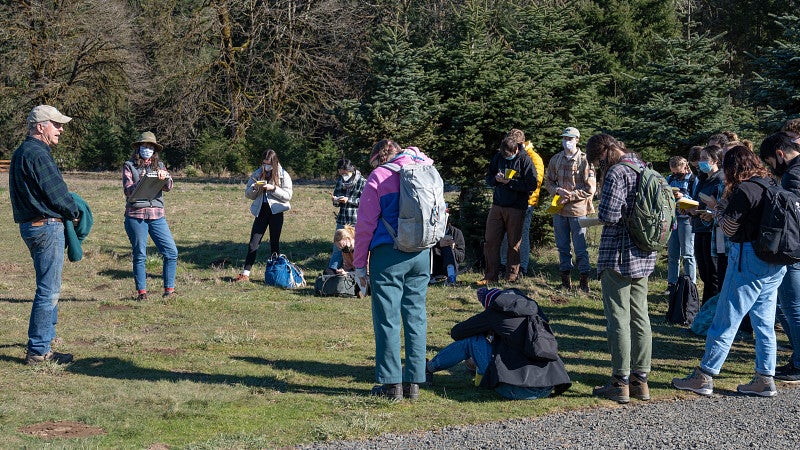
Amid the devastation, Ponisio saw opportunity.
“I said, ‘It’s going to be such a great place for bees now,’” Ponisio says. “‘Do you mind if we plant more flowers?’ And they’ve just been super supportive.”
Russell says he supports the project because he knows how important pollinators are for his blueberries. He prefers native bees to commercial colonies because the latter are expensive to hire and are vectors for disease.
“If we can use native pollinators,” Russell says, “we can reduce costs and reduce the spread of disease.”
Last fall, Ponisio and a few graduate students went to the ranch about a week after workers burned 200 slash piles on the ridge to clean up after the fire. Ponisio and the students sowed native plant seeds into 20 piles, picking 23 species that thrive in early successional forests.
“We picked the flowering plants we thought bees would visit, the ones with nice big flowers, and we got the seeds and we planted these little plots,” Ponisio says. “Our goal is to understand which plants do well in these environments.”
The Douglas fir saplings planted after the fire will grow with the flowers around them, so the researchers can determine which species can coexist with the young trees.
There’s already interest in the timber industry for supporting native bee populations, in part to forestall new regulations on forestry practices, Ponisio says. If her project can show it’s not hard to get these patches of native plants established, then maybe the timber industry will adopt the practice, she says.
‘I like to hope change is coming,” Ponisio says. “Imagine driving down the road and instead of seeing the usual clear-cuts, you see meadows of wildflowers with all these happy bees. There would be so much bee habitat!”
Writer Tim Christie and photographer Nicolas Walcott, BS ’16 (journalism), work for University Communications.


